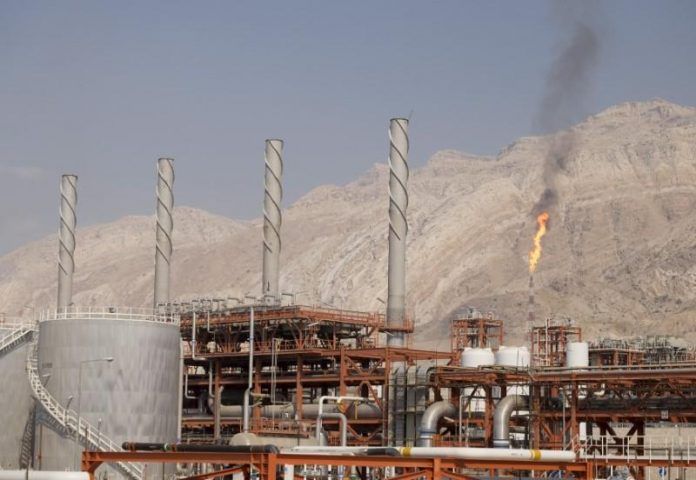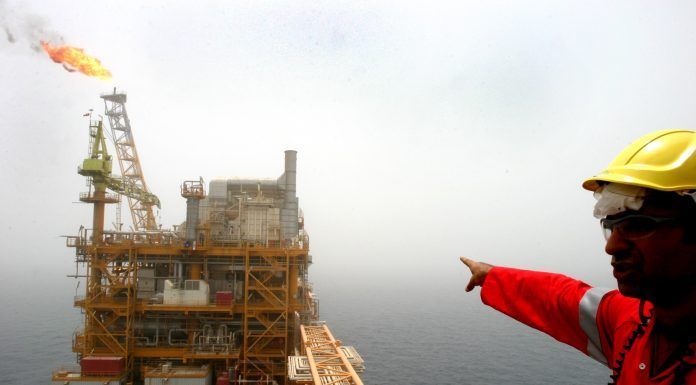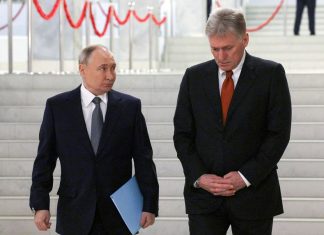
By Bozorgmehr Sharafedin and Julia Payne
LONDON, March 4 (Reuters) – A deal to limit Iran‘s nuclear programme would lead to sanctions on its oil sector being lifted but it could take several months for any more Iranian crude to flow, and even then it may only offer short-term respite to tight oil markets, analysts said.
Oil soared this week to almost $120 a barrel for the first time in a decade as the West slapped sanctions on Russia over Ukraine, before hopes that a deal with Iran could be announced within days knocked crude from its highs.
The nuclear talks appeared to near a climax on Friday with talk of an imminent ministerial meeting. Read full story
But even if a deal were struck next week, it could take several months to confirm Iran‘s compliance so sanctions could be lifted, meaning it is unlikely any additional Iranian oil would hit the market until May or June, analysts said.
When the first deal between major world powers and Tehran was signed in 2015, for example, sanctions were only fully lifted six months later, once Iran‘s nuclear-related measures had been verified by the U.N.’s watchdog.
Most refiners around the world have also shunned Iranian oil for several years and they would need two to three months to finalise technical arrangements to enable imports from Iran to resume, analysts said.
As and when Iran‘s compliance with any deal is certified, however, it would not need to wait to boost output from oilfields to export more as it could release crude in storage and help offset some of the pressure on oil prices caused by the slowdown in Russian supplies due to sanctions on Moscow.
Data firm Kpler estimates that Iran had 100 million barrels in floating storage as of mid-February, meaning it could add 1 million barrels per day (bpd), or 1% of global supply, for about three months, but that would only be a short-lived boost.
GETTING IN POSITION
Iran is expected to ramp up its output following a deal too but analysts warn it could take three to six months to raise exports by 1 million to 1.3 million bpd – with further increases in production taking years and depending on major investment in ageing oil infrastructure.
Still, Iran‘s crude in floating storage could hit the market quickly and Tehran has been moving it into place, analysts said.
“We have seen a notable jump in Iranian oil held in floating storage in Chinese waters, from 7.8 million barrels in early January to 14 million barrels now. Their location seems to indicate they are waiting to discharge in the coming days or weeks,” said Homayoun Falakshahi, a senior analyst at Kpler.
Iran has also moved some of its floating stocks of condensate from anchorage to its oil terminal on Kharg Island, in anticipation of imminent export, Sara Vakhshouri, president of SVB Energy International, said.
“This is about 20 million barrels as of now, and at least another additional 50 million barrels of stored liquid is available for immediate export,” she said.
Kpler and energy consultancy FGE estimate that if a nuclear deal is reached in early March and sanctions are lifted in the direct aftermath, the boost to exports would mostly be seen from May and June.
Ehsan Khoman, analyst at MUFG Bank, also expects at least two to three months for verification of Iran‘s compliance, followed by another month for diplomatic adoption of the deal and its implementation.
A European trading source said, however, that the process might be faster than 2015 “as there is impetus due to the crisis in Ukraine” and disruptions to Russian oil exports.
China Buys More Iranian Oil Now Than It Did Before Sanctions, Data Shows
EXCLUSIVE- China Puts 4 mln Barrels of Iranian Oil Into State Reserves -Source, Vortexa
SIX TO NINE MONTHS
Iran sits on the world’s fourth-largest oil reserves and relies heavily on oil revenues.
Iran‘s oil exports, the government’s main source of income, plummeted from a peak of 2.8 million bpd in 2018 to as low as 200,000 bpd after U.S. President Donald Trump withdrew from the 2015 nuclear deal and reimposed sanctions.
Iranian Oil Minister Javad Owji vowed on Thursday that the country would “reach the highest oil export capacity within one or two months” after any nuclear deal, according to the oil ministry’s news agency SHANA.
Iran has been gradually increasing production in the last six months due to rising exports to China and also in anticipation of the lifting of sanctions.
At the moment, Iran is estimated to be producing about 2.5 million barrels a day but only about 700,000 barrels are available for export once domestic demand is taken into account, with most of that going to China. Read full story
Bjornar Tonhaugen, head of oil markets at Rystad Energy, said he expected Iran‘s crude exports to increase by 1 million bpd in a six-to-nine month period once the process of lifting sanctions has completed.
FGE also said it would take time for production to rise and exports to increase
“Iran will technically be able to increase its production to some 3.4 million bpd by August/September 2022 … and then to 3.7 to 3.8 by end-2022,” FGE said.
Longer term, Iran is hopeful that major oil firms will return to Iran after the lifting of sanctions and help boost production at its aging oilfields. Read full story
(Reporting by Bozorgmehr Sharafedin and Julia Payne; Additional reporting by Ahmad Ghaddar; Editing by David Clarke)






